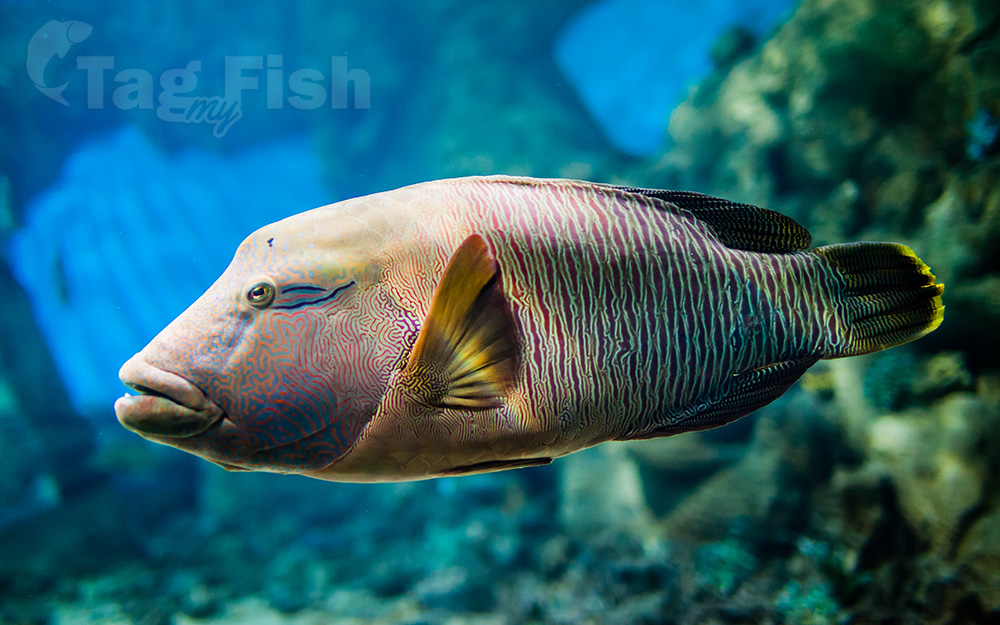Humphead wrasse
(Cheilinus undulatus)

Classification
General data
The humphead wrasse (Cheilinus undulatus) is a large species of wrasse mainly found on coral reefs in the Indo-Pacific region. It is also known as the Māori wrasse, Napoleon wrasse, Napoleon fish, Napoleonfish, so mei (Cantonese), mameng (Filipino), and merer in the Pohnpeian language of the Caroline Islands.
Description
The humphead wrasse is the largest living member of the family Labridae. Males, typically larger than females, are capable of reaching up to 2 meters and weighing up to 180 kg, but the average length is a little less than 1 meter. Females rarely grow larger than one meter.
This species can be easily identified by its large size, thick lips, two black lines behind its eyes, and the hump on the foreheads of larger adults. Its color can vary between dull blue-green to more vibrant shades of green and purplish-blue. Adults are usually observed living singly, but are also seen in male/female pairs and in small groups.
Habitat
The humphead wrasses can be found on the east coast of Africa around the mouth of the Red Sea, and in some areas of the Indian and Pacific Oceans. Juveniles are usually found in shallow, sandy ranges bordering coral reef waters, while adults are found mostly in offshore and deeper areas of coral reefs, typically in outer-reef slopes and channels, but also in lagoons.











